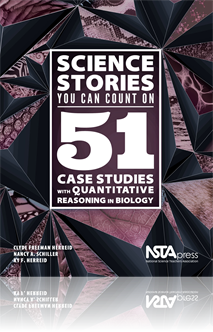All Book Chapters
Book Chapter
Resonance—a system’s tendency to oscillate at greater amplitudes at certain frequencies—is a common phenomenon in physics. The explorations in this chapter will define how resonance occurs. Teacher background information, assessment, safety not...
Book Chapter
Buoyancy is a phenomenon that occurs not only in water but also in the atmosphere. The effect of buoyancy is easily felt in water. A hot air balloon rises up in the air because of a buoyant force from the air around it and the principle of buoyancy c...
Book Chapter
The concept of angular momentum can be related to linear momentum. The difference is that while linear momentum occurs with motion in a straight line, angular momentum applies to circular motion. The observations in this chapter cover the law of cons...
Book Chapter
Magnetism is a well known physics phenomenon that is used, for example, in computers for magnetic recording, in Maglev trains, or for holding notes on a refrigerator door. Magnetism is a phenomenon in which the magnetic materials interact with one an...
Book Chapter
Electromagnetic induction is the basis for producing energy in our society. This phenomenon is used in wind generators, hydroelectric generators, and nuclear power plants, as well as in metal detectors, induction brakes, and transformers. In this cha...
Book Chapter
In this chapter, you will find explorations on gadgets that are very interesting and illustrative but that do not fit into the other chapters. However, many of these gadgets complement the explorations in earlier chapters. Teacher background informat...
Book Chapter
Rubber vs. Glass: I Wonder Why sample
In this sample from Rubber vs. Glass: I Wonder Why you will explore the properties of rubber vs. glass and will discover that different objects have special and useful properties. ...
Book Chapter
Light and Color: I Wonder Why sample
This sample from Light and Color: I Wonder Why unfolds observations about light, interaction with the properties of light, and the effect of light on objects. By reading this sample, you’ll discover what we mean when we say the colors of a rainbow...
Book Chapter
Sounds Are High, Sounds Are Low: I Wonder Why (Book Sample)
This sample from Sounds Are High, Sounds Are Low: I Wonder Why presents the nature of waves and sound with humorous proof in poetry of just how fun it is to observe with your ears. It’s ideal for beginning readers and hilarious practice for future...
Book Chapter
Michael's Racing Machine: I Wonder Why sample
This sample from Michael’s Racing Machine: I Wonder Why illustrates the use of simple machines to accomplish work. It provides an easy-to-understand lesson in how simple machines are all around us, making work more efficient. You will learn that a ...
Book Chapter
Dark as a Shadow: I Wonder Why sample
This sample from Dark as a Shadow: I Wonder Why is written in lively rhymes, making it fun to learn the science behind why shadows change length through the day and disappear in the dark. Kids will learn to twist and bend or wiggle and shake, to see...
Book Chapter
Next Time You See The Moon sample
This sample chapter from Next Time You See The Moon focuses on the Moon's changing shapes and the many phases of the Moon. If you keep track of the Moon phases for a while, you will discover that it takes about a month to observe all of the Moon phas...
Book Chapter
A Can of Bull? Do Energy Drinks Really Provide a Source of Energy?
The case in this chapter teaches students about large biomolecules, nutrition, and product analysis. Students conduct a biochemical analysis of several popular energy drinks on the market and determine whether these products nutritionally match their...
Book Chapter
The purpose of this lab investigation is to introduce the concept of osmosis and help students understand “Why Do Red Blood Cells Appear Bigger After Being Exposed to Distilled Water?” This lab investigation will also help students learn how to ...
Book Chapter
The purpose of this lab investigation is for students to apply what they know about the characteristics of plant and animal cells to classify an unknown single-celled organism and to determine “How Should the Unknown Microscopic Organism Be Classif...










